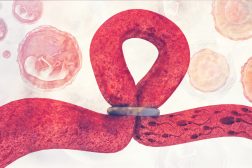Definition
noun
The cycle that depicts the changes in the endometrial lining occurring during a menstrual cycle, and is comprised of the phases: menstruation, proliferative phase, and secretory phase
Supplement
The menstrual cycle is the reproductive cycle of female humans and other animals, particularly certain primates (e.g. apes and monkeys), shrews, and bats.1 It is described through the ovarian cycle and the uterine cycle.
The uterine cycle is comprised of phases characterized by the changes in the endometrial lining of the uterus. The phases of uterine cycle include (1) menstruation, (2) proliferative phase, and (3) secretory phase.
Menstruation is the periodic physiologic discharge through the vagina of blood, cervical mucus, vaginal secretions, and endometrial tissue in the absence of pregnancy. It is the first phase of the uterine cyle. In humans, it usually recurs at about four week intervals, or about a month, thus the Latin derivation of the term from menses, meaning months. Premenstrual symptoms include bloating, fatigue, breasts tenderness, nausea, and mood changes. Physical and emotional symptoms occurring in about one to two weeks prior to menstruation is referred to as premenstrual syndrome. Other disabling symptoms include headache, menstrual cramps, and dysmenorrhea. This phase typically lasts 3 to 5 days.
The proliferative phase is the second phase of the uterine cycle. In this phase, the estrogen causes the lining of the uterus to proliferate resulting in the formation of a new layer of endometrium in the uterus.
The secretory phase is the last phase of the uterine cycle. In this phase, the progesterone produced from the corpus luteum makes the endometrium to become receptive to blastocyst implantation, e.g. by increasing blood flow and uterine secretions. In the absence of pregnancy, the endometrium is shed during the menstruation phase of the menstrual cycle.
See also:
- ovulation
- menstrual cycle
- ovarian cycle
- menstruation
- ovum
Reference(s):
1 Lopez, K. H. (2013). Human Reproductive Biology. Academic Press. p. 53.


